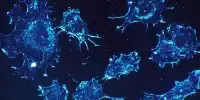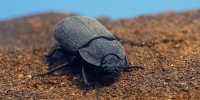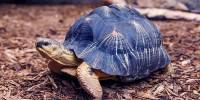Google “Pterosaur” and you’ll probably be looking at the fullness of an image of long-beach, stern-looking dinosaurs who will scare the hearts of mankind if they survive today. A new study published in the Journal of Paleontology and Evolutionary Science, however, reminds you here that not all pterosaurs, especially anurognathids, were so inferior. The paper describes a new genus and species from the formation of the mid-late Jurassic Tiaojishan and this baby is round. This new species is of particular interest because it shows that there were more size variations in anurognathids than previously thought.
It is perhaps not surprising that when you write this paper, considering that such discoveries are being made, there are followers in Germany, Kazakhstan, Mongolia, China, and North Korea who have been rescued by six nominal species from just 12 specimens. The authors of the study wrote, “Some previous interpretations of follow-up morphology and methodology rely on limited available information.”As time and new samples are searched, new information is provided and new explanations are presented. For this reason, each new sample is important for the group to understand.”
The name of the new species on paper was Sinomacrops bondei, and it marked the first anurognathid to appear on the side of his skull. After a phylogenetic analysis, the researchers placed the novel as a sister-group of the pterosaur Batrachognathus volans, joining forces to form the genus Batrachognathinae genus. The open-access paper was completed with a particularly aesthetically pleasing piece by Zhou Chuang, who has seen the glossy new (to science) pterosaur gain a lot of fans online. Natalia Jagielska, a peer reviewer of the study and a PhD paleontology student, compared a particular choice on Twitter, showing how closely the do-eyed animal resembles pergolas.
Famous by the 2013 film Star Wars: Episode VIII Last Jedi, Porgs is a swarm of rocks and roast on top of Luke Skywalker’s secluded island, “and the inquisitive animal” is Star Wars.com databank. The thread obtained as a result of Jagielskar’s observation probably pointed out an error in the existing classified vocabulary in depriving the scientific community of descriptions of “Jolly Fly Boy” and “Bright Flying Frog with Tail”. Do phylogenetic studies lack the details needed to create any value for them? Perhaps, but I think you will agree we can all benefit from a few more Jolly Fly Boys in our lives.















